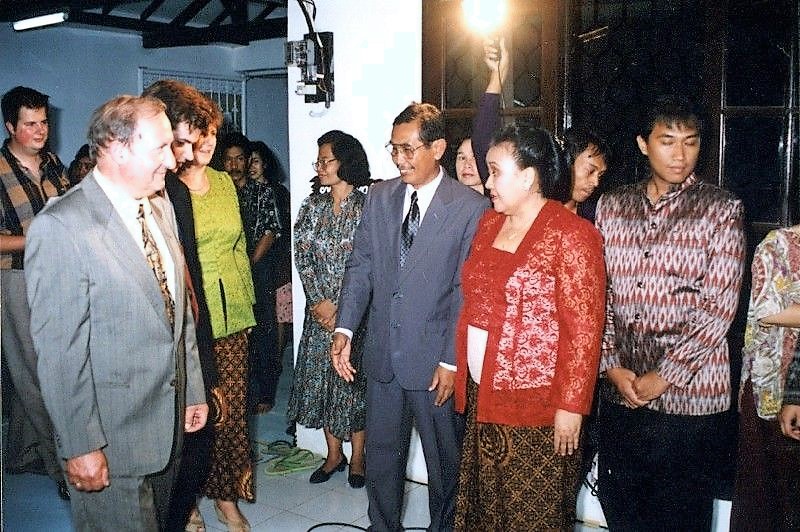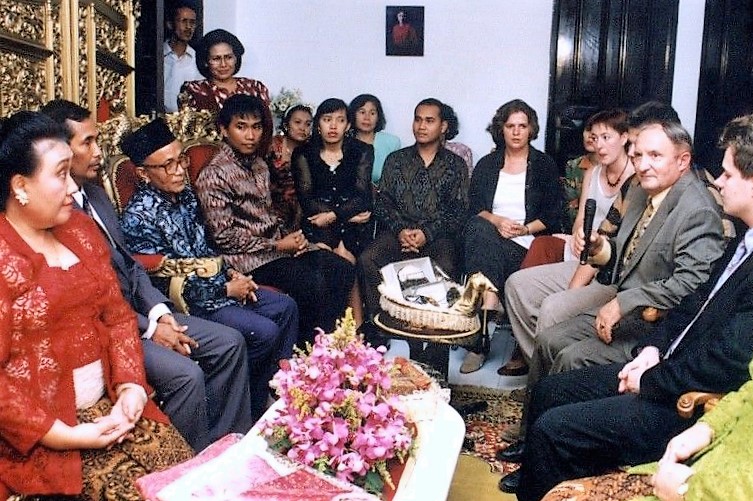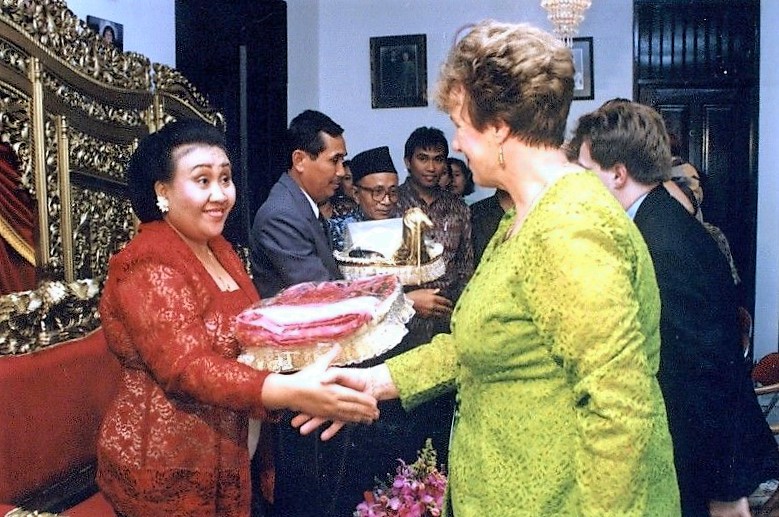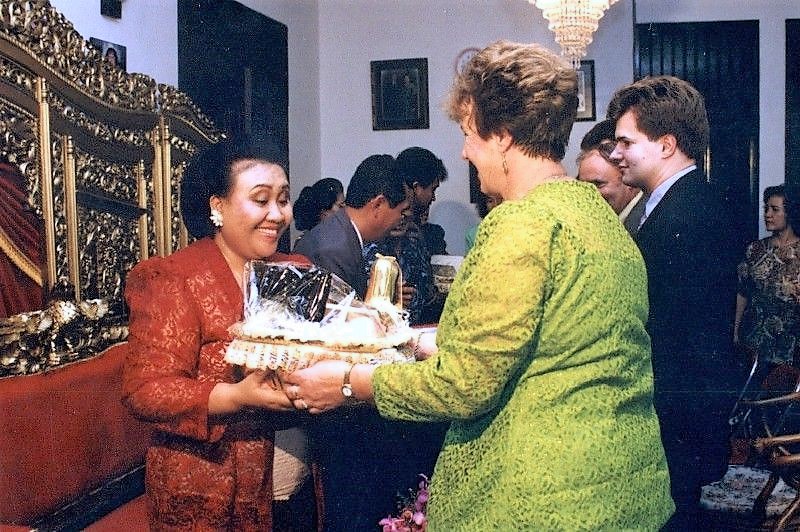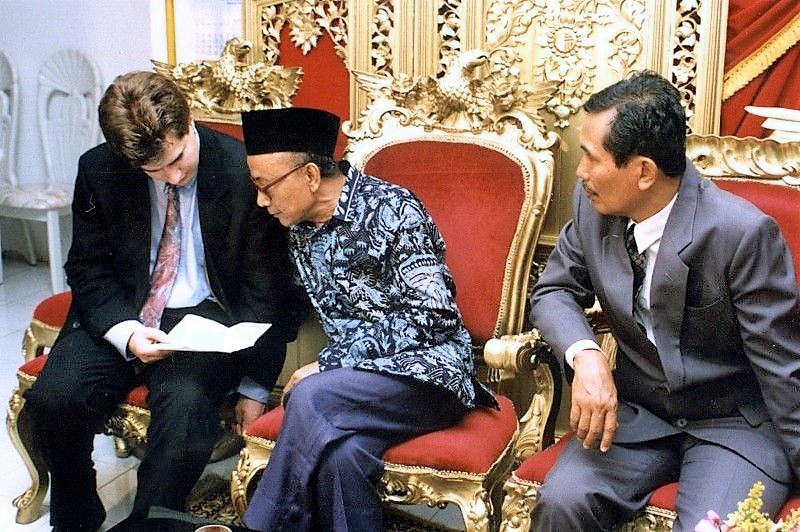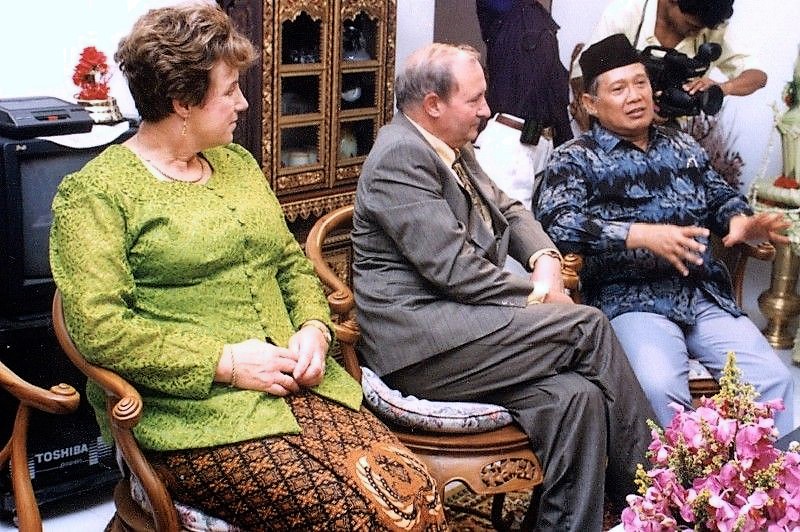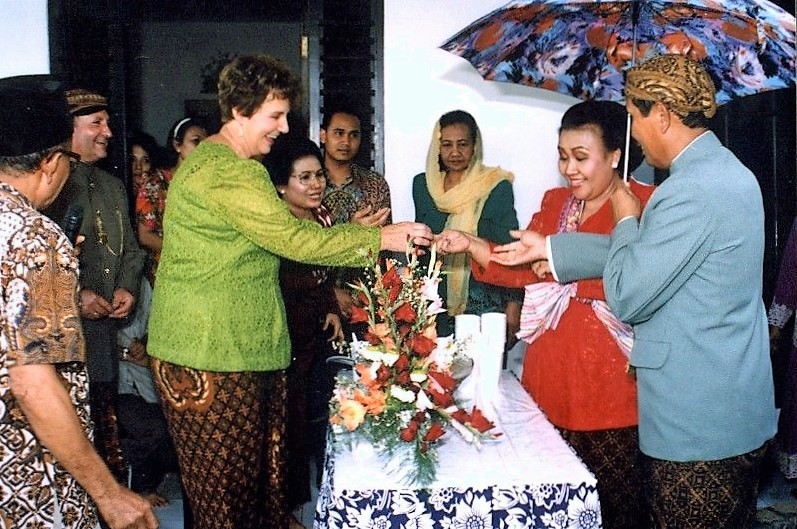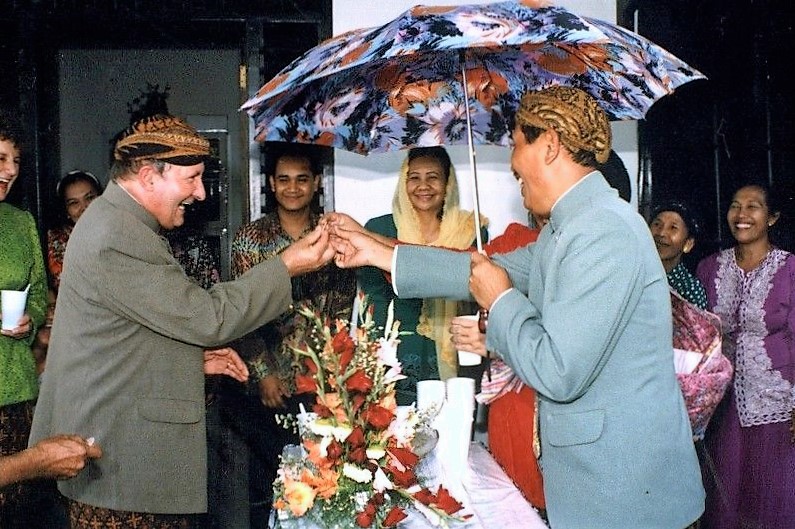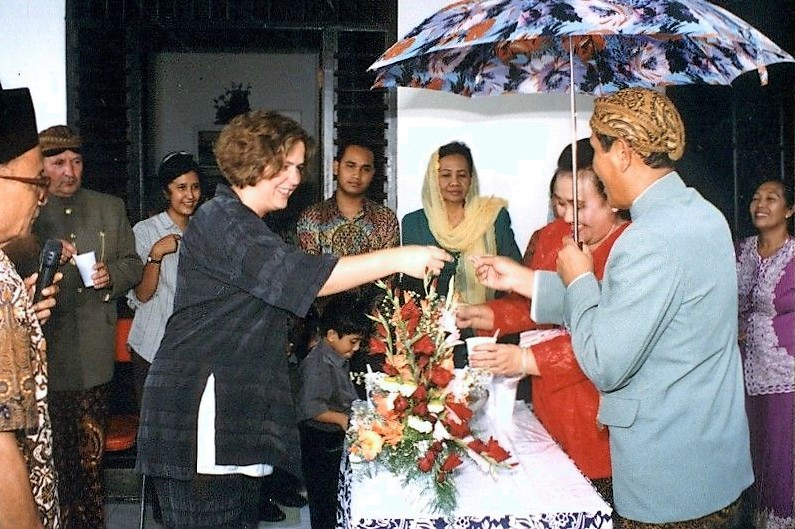Javanese Wedding - Peningsetan Ceremony
The Peningsetan Ceremony:
Peningsetan or Srah-Srahan is derived from the word singset (meaning to tie up). The families of both sides have to agree on the wedding. The parents should become in-laws. The family of the would-be-bridegroom visit the parents and the family of the would-be-bride. They are bringing some gifts:
- A set of Suruh Ayu (beautiful betel leaves), wishing for safety.
- Several batik cloths with different patterns, wishing for happiness and the best things in life.
- Materials for Kebaya (women shirts).
- White waist sash for women as a sign of a strong willingness.
- Fruits, wishing a good health.
- Rice, sugar, salt, cooking oil, etc. symbolising the basic needs in life.
- A set of rings for the couple.
- Some money as a contribution for the wedding ceremony.
On this occasion, both families should make acquaintance to each other in a more relaxed atmosphere. Only the would-be-bridegroom cannot visit the would-be-bride in the attractively decorated wedding room.
In fact, the would-be-bridegroom arrives together with his family, but he is not entitled to enter the house. While his family is inside the house, he sits in the veranda of the house accompanied by some friends or relatives. During that time, he is only given a glass of water, and he is not allowed to smoke. He may eat only after midnight. It is a lesson that he must be able to resist hunger and temptation.
Before his family leaves the house, the parents tell that they hand over the would-be-bridegroom to the responsibility of the host and the hostess. After the visitors have left the house, the would-be-bridegroom is allowed to enter the house but not the wedding room. This is called Nyantri. It is done for safety and practical reason, considering that tomorrow he has to be dressed and prepared for Ijab and the other wedding ceremonies.
At the end of ritual, the happy couple is selling rujak (mixed slices of fruit with hot sambal) and dawet (sweet refreshment drink made of coconut milk mixed with sugar and small pieces of soft rice cookies).
The guests pay for this with a piece of earthen tile. Rujak is symbolizing enthusiastic life. Dawet is called dawet plencing. Dawet is a healthy drink. Plencing is leaving a place unnoticed. Dawet plencing is depicting a smooth and safe birth of the baby.

